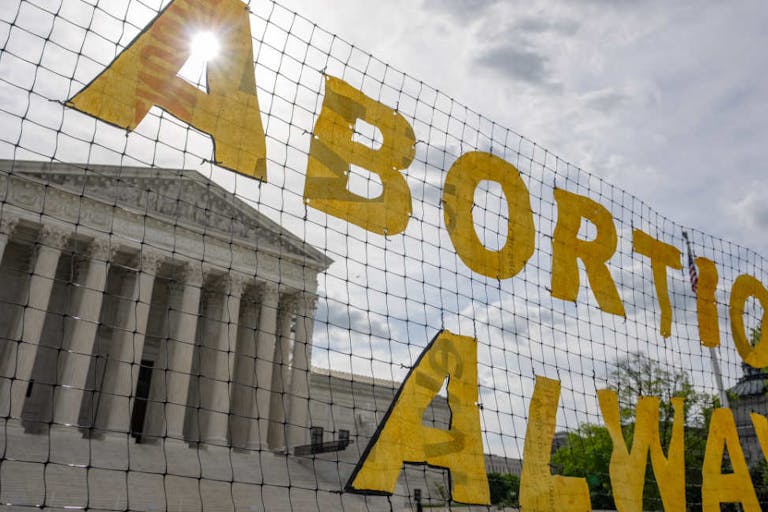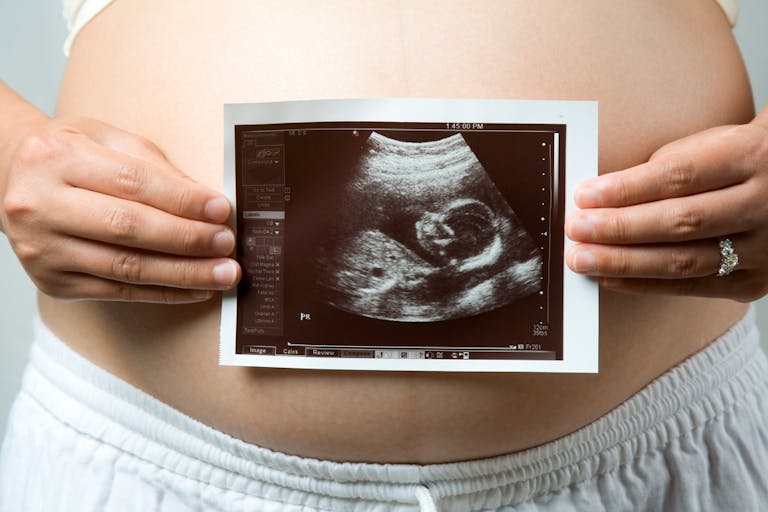
A growing number of Americans call themselves ‘pro-choice’ – but what’s really behind it?
Nancy Flanders
·
Studies: Abortion after a prenatal diagnosis leads to emotional trauma
We often hear that there are cases in which abortion should absolutely be an option – situations that are so emotionally difficult that even so-called pro-lifers seem to think that killing the preborn child is the best thing to do. We hear abortion advocates claim that aborting the child will save the parents unnecessary pain. But it isn’t true.
Receiving a terminal diagnosis for your child is in itself a tragedy. Yet aborting the baby won’t take that pain away: it can actually compound it. In fact, study after study shows that carrying the child to term allows parents to properly grieve, while aborting the child leads to serious emotional stress.
A study from Duke University showed that women who terminated after a prenatal diagnosis of an “incompatible with life” condition reported “significantly more despair, avoidance, and depression than women who continued the pregnancy.” The study also showed that there is a “psychological benefit” for women who carry their babies to term. Parents who carry the baby to term report feeling more emotionally prepared for the child’s death, and they feel gratitude and peace about their child’s life.
Another study from 2009 found that nearly 17% of women who abort a wanted baby because of a prenatal diagnosis were then diagnosed with a psychiatric disorder such as post-traumatic stress, anxiety, or depression within 14 months of terminating. Despite what society would have us believe – that aborting a baby based on a diagnosis is less traumatic than carrying to term – the studies show aborting the child is actually much more damaging to the mother.
Unfortunately, most parents who are given a prenatal diagnosis of their child are immediately given the option to abort with little helpful or factual information. As attorney Anna Franzonella reports:
One study found most abortions because of fetal abnormality occurred within 72 hours of the woman receiving the test results. Three days hardly allows time to become informed about resources available to parents of children with these disabilities.
“What is foggy is that most parents need – when they leave the office with a prenatal diagnosis – they need someone to present to them the option of carrying to term and to remove from their diagnosis any misinformation that could have been provided to them, medical in nature – risk to their health, less bereavement,” explains Tracy Winsor, co-founder of Be Not Afraid, a non-profit assisting parents who carry to term after a prenatal diagnosis. “They also probably, if they’ve been told that it risks their future fertility, they need to know what abortion at 21 weeks looks like.”
This video, from former abortionist, Dr. Anthony Levatino, shows what abortion at 21 weeks looks like. (No graphic images are used, only medical animation.)
Article continues below
Dear Reader,
In 2026, Live Action is heading straight where the battle is fiercest: college campuses.
We have a bold initiative to establish 100 Live Action campus chapters within the next year, and your partnership will make it a success!
Your support today will help train and equip young leaders, bring Live Action’s educational content into academic environments, host on-campus events and debates, and empower students to challenge the pro-abortion status quo with truth and compassion.
Invest in pro-life grassroots outreach and cultural formation with your DOUBLED year-end gift!

Thankfully, Be Not Afraid can link parents to local programs and people who can help walk them through the diagnosis, pregnancy, birth, and death of their child instead of turning them over to an abortion clinic. Perinatal hospice and palliative care options are becoming more widely available to parents who learn that they will have to welcome their child into the world while also saying goodbye.
According to PerinatalHospice.org, perinatal hospice and palliative care programs provide comprehensive care from a highly skilled and compassionate team of obstetricians, perinatologists, nurses, neonatologists, social workers, midwives, counselors, chaplains, and NICU staff members. They provide medical care and comfort and allow the family to plan for their child’s birth and death while helping them feel they have some level of control on an often unpredictable situation. Parents receive guidance and assistance in medical decisions and on caring for their baby in the time they have together. Plenty of emotional support is available as well. Parents even have the option to have a professional photographer available for their child’s birth.
Choosing life is a decision that will not only bring parents peace of mind and comfort, but will also honor their child’s life as one that was worthy of continuing until its natural end. Parents who choose life aren’t simply waiting around for death; they are actively living life with their child, experiencing all the joys they can together in the limited amount of time they’ve been given.
One such mother wrote about her experience with prenatal diagnosis and carrying to term at PerinatalHospice.org:
By giving my son the protection of my body to face the announced death, I was giving him life, all of his life, so that it would be recorded in our family, in all of our history, and in the hearts of each of us. It wasn’t a morbid walk but a formidable surge of love. – Isabelle
We wouldn’t kill our born child if she were given a diagnosis. We would fight to give her a chance, and we would hold on to hope. Even those babies with the smallest chance of survival deserve the opportunity to live a life of love. Parents, siblings, and extended family deserve the chance to bond with and love the baby, and to create memories. Perinatal hospice and palliative care allow parents to show their child love and acceptance. It lets the parents continue to celebrate their child’s life and show everyone that this child’s life mattered, despite its brevity.
Plus, as the research shows, choosing life for your terminally-ill preborn child is beneficial to everyone.
Live Action News is pro-life news and commentary from a pro-life perspective.
Contact editor@liveaction.org for questions, corrections, or if you are seeking permission to reprint any Live Action News content.
Guest Articles: To submit a guest article to Live Action News, email editor@liveaction.org with an attached Word document of 800-1000 words. Please also attach any photos relevant to your submission if applicable. If your submission is accepted for publication, you will be notified within three weeks. Guest articles are not compensated (see our Open License Agreement). Thank you for your interest in Live Action News!

Nancy Flanders
·
Politics
Cassy Cooke
·
Guest Column
Right to Life UK
·
Issues
Angeline Tan
·
Issues
Bridget Sielicki
·
Issues
Nancy Flanders
·
Human Interest
Nancy Flanders
·
Politics
Nancy Flanders
·
Human Interest
Nancy Flanders
·
Human Interest
Nancy Flanders
·
Analysis
Nancy Flanders
·